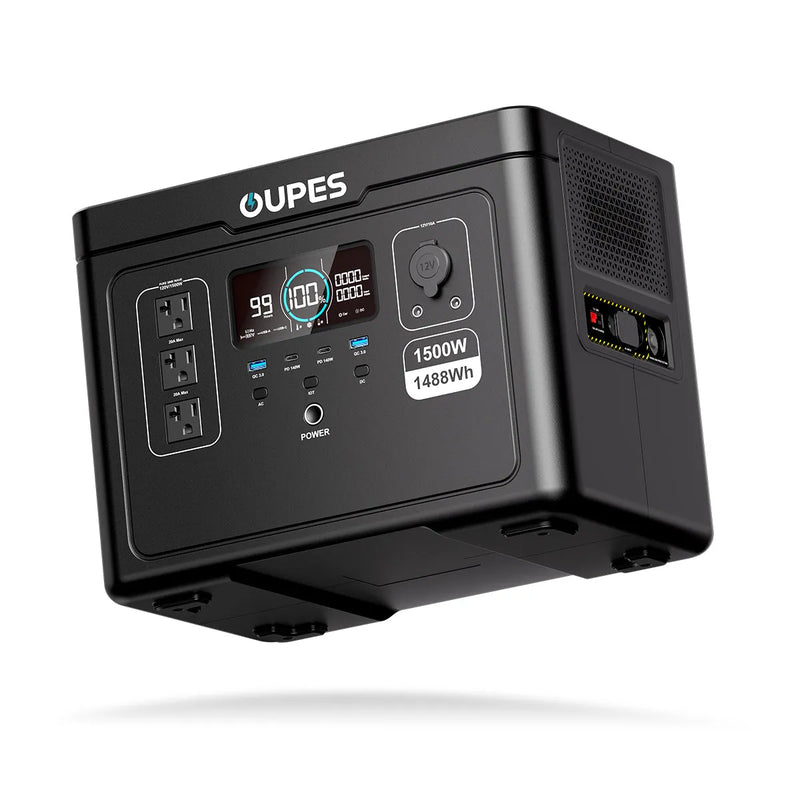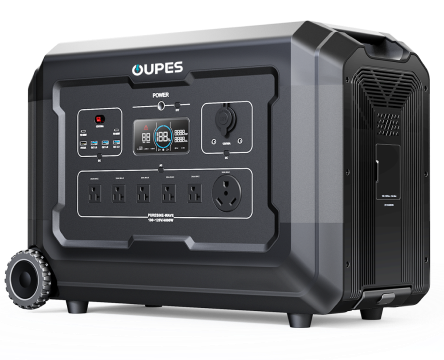
Imagine waking up during a blackout. Your home is dark, the fridge is silent, the internet is down—and the usual hum of electricity is gone. Now imagine that within minutes, your home is back on its feet: lights flicker on, fridge whirs low, devices charge, and essential appliances run—all without the grid. This isn’t science fiction—it’s the power of a solar generator doing what many assume it can’t. But how long can a solar generator actually sustain a house? That answer depends on a mix of capacity, consumption, and smart usage.
If you’ve wondered whether solar generators can truly support household needs during an outage—or what setup you’d need to keep things running for hours or days—this article breaks down the metrics, the planning, and the real-world use. From daily essentials to scalable strategies, you’ll learn how solar energy can be a reliable backbone for home energy independence.
Assessing Household Energy Consumption Patterns
The first step in determining how long a solar generator can power a house is understanding how much energy your household actually uses. Unlike campers or minimalist users, typical households consume energy for a variety of appliances—refrigerators, lights, HVAC, computers, kitchen equipment, and medical devices. Many homes consume between 20 to 40 kilowatt-hours (kWh) per day under normal conditions.
However, in emergency conditions, users often prioritize essential circuits: refrigeration, communication devices, critical lighting, medical equipment, and perhaps a small heating or cooling device. This reduced baseline might bring usage into the 5–15 kWh per day range depending on habits and home size.
To plan effectively, listing each device or circuit you want to run and calculating its hourly or daily usage helps estimate total load. This informs how many watt-hours of storage you need—and thus how large your solar generator system should be. For instance, if your prioritized circuits total 10 kWh per day, you need at least that much storage, plus your inverter must handle the peak power draw.
Breaking the estimate into hourly loads helps too. Many appliances cycle on and off (like refrigerators), averaging maybe 100–200 watts continuously over time. By staggering device usage, you can stretch battery life. With planning, a solar generator system delivering 10kWh daily can plausibly power the essentials through multi-day outages.
Battery Capacity and Inverter Limits in Home Use
At the core of any solar-powered home backup system is the battery pack, measured in watt-hours (Wh), and the inverter, rated in watts. The battery determines how long the system can run without recharge, while the inverter determines how much load can be handled at any given moment.
Large-capacity systems—those with 10,000 Wh (10 kWh) or more—are often required to support home use over extended hours. Many solar generator brands offer modular expansion; for example, a base unit of 3 kWh can be expanded with additional battery modules to reach 10–20 kWh of capacity. This enables homeowners to tailor system size to their needs.
Inverter wattage is equally important. If your essential circuits require a simultaneous draw of 3,000 watts during startup (say for a fridge compressor and medical device), your inverter must be rated above that surge capacity. Many solar generators designed for home backup offer continuous outputs of 2,000 W and surge capacity up to 5,000 W to safely start motors and handle peak loads.
Efficiency losses must be considered. With inverters typically operating at 90–95% efficiency, and battery charging/discharging losses of around 10%, the net usable energy is lower than raw capacity. Thus, a 10 kWh battery might practically deliver 8–9 kWh usable. Smart charging strategies and load management help mitigate inefficiencies.
Solar Recharging and Sustainable Operation
To sustain home usage beyond one day, solar recharging is essential. A solar generator can keep running a house as long as the batteries are recharged faster than they drain. This demands sufficient solar panel capacity and reasonable weather conditions.
For example, to replenish a 10 kWh battery in one day, you might need around 1,500 W of high-efficiency solar panels producing an average of 6–7 peak sun hours. On sunny days, this restores battery capacity and allows continuous operation. On cloudy days, solar input drops; so performance depends on system size and weather resilience.
Modularity helps—systems like those from OUPES support parallel solar-input configuration, letting you add multiple panel arrays up to recommended limits (e.g. 1,000–1,800W). These units support MPPT controllers, which dynamically maximize input even under diffuse light. When solar input exceeds daily usage, excess energy can be diverted to charging devices or kept in reserve.
This day-night recharge cycle enables multi-day operation without fuel or grid power. For homeowners in regions with dependable sun, combining storage battery capacity and solar recharge capability makes sustained off-grid backup feasible—making solar generators a viable home backup solution, not just a camping tool.
Practical Runtime Estimates for Real Homes
Let’s consider real-world scenarios to illustrate how long a solar generator system can power a house. In a moderate-usage mode—running refrigerator (150W average), LED lighting (100W total), Wi-Fi router (10W), phone charging (10W), and occasional laptop or medical device—daily usage might be around 4–5 kWh.
If you have a 10 kWh battery bank, that covers two full days of operation without recharging. If your solar panels generate 5–6 kWh during daytime, that restores one day's worth of energy, enabling near-continuous power. Overhead like inverter losses and inefficiencies reduce this to 8 kWh usable, but planning accounts for that.
A heavy usage storm scenario—like winter heating via space heater or operating power tools—could demand 10–15 kWh/day. In that case, larger scale systems with 20 kWh+ storage and larger solar arrays are necessary. Users might stagger usage—running tools midday when solar input is highest or limiting heating to small zones to conserve energy.
For emergency home backup, most households can optimize lifestyle and limit critical loads to maximize runtime. A 10 kWh system with a 2 kW continuous inverter and 1,500–2,000 W of solar panels can realistically support essentials for 2–3 days, or indefinitely if solar input is consistent.
Factors That Shorten or Lengthen Operational Lifespan
Several variables can reduce effective runtime or extend it. High ambient temperatures shorten battery life and reduce efficiency. Using inverter at near maximum loads continuously stresses internal components. Frequent cycling below recommended discharge depth increases wear.
Conversely, homes with efficient practices—good insulation, energy-efficient LED lighting, staged device use, and low-wattage habits—can reduce load to 2–3 kWh/day, stretching battery life and extending runtime significantly. Fans instead of AC, heated blankets instead of space heaters, and strategic appliance use help conserve energy.
Routine maintenance maintains performance—clean solar panels, balanced battery charge, ventilation for cooling, and firmware updates where applicable. System monitoring apps or LCD displays allow visibility into input/output wattage and battery status, enabling real-time decisions to reshape usage patterns.
Finally, component quality and design matter. Premium-grade LiFePO4 batteries, pure sine wave inverters, and MPPT controllers all contribute to higher efficiency and longer useful life. Mainstream solar generators like those from OUPES are engineered with these features built in, ensuring performance and durability in home use scenarios.
When To Upgrade Your System
If your generator frequently runs out of power before daily recharge, or fails under startup load, upgrade may be needed. Signs include diminished battery runtime, inverter shutdowns during peaks, or inability to recharge fully due to inadequate panel wattage.
Upgrading options include adding more battery modules, increasing solar panel wattage, or swapping inverter for higher rated unit. Scalable systems that support expansion let you grow your setup as power needs increase. This flexibility lets homeowners start modestly and scale up over time.
Also consider future utility needs—like connecting to gateways for grid support, integrating with home energy management panels, or powering devices like sump pumps or EV chargers. Aligning system upgrades with future preparedness makes home solar generator systems long-term investments, not short-term fixes.
In summary, with proper sizing, planning, and usage, a solar generator can reliably power a home for extended periods—especially when paired with scalable storage and solar input. Systems like those from OUPES are engineered for just that kind of steady, efficient home backup performance.
Conclusion
So how long can a solar generator power a house? The answer depends on system capacity, usage habits, and sunlight availability. With a well-designed setup—10 kWh or more of battery storage, a capable inverter, and sufficient solar panels—most households can sustain essential energy needs for days or even longer.
Moderate use routines, energy efficiency measures, and maintenance play equally important roles in runtime and system longevity. With scalable options and smart power management, solar generators are increasingly viable as reliable backup sources—not just for camping, but for real-world home resilience in the face of outages.
Investing in a high-quality system built with reliability in mind ensures your home remains powered, safe, and comfortable. With solar as your energy backbone, you gain independence from the grid—and peace of mind, no matter how long the lights stay out.




























